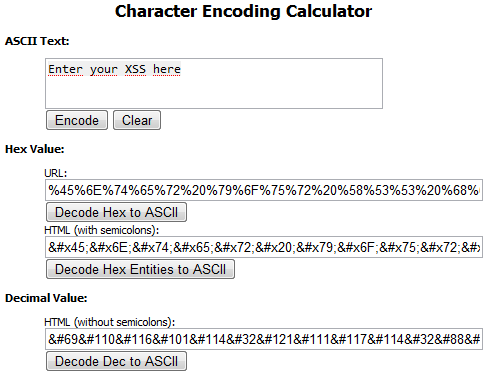Answer the question
In order to leave comments, you need to log in
Answer the question
In order to leave comments, you need to log in
If according to the "correct", then protection against XSS comes down to elementary verification of incoming data on the server. It is advisable to use a white list.
It is impossible to filter only on javascript, because firebug can be bypassed.
In general, on the PHP side there is a good way:
$find = array ('/data:/i', '/about:/i', '/vbscript:/i', '/onclick/i', '/onload/i', '/onunload/i', '/onabort/i', '/onerror/i', '/onblur/i', '/onchange/i', '/onfocus/i', '/onreset/i', '/onsubmit/i', '/ondblclick/i', '/onkeydown/i', '/onkeypress/i', '/onkeyup/i', '/onmousedown/i', '/onmouseup/i', '/onmouseover/i', '/onmouseout/i', '/onselect/i', '/javascript/i', '/javascript/i' );
$replace = array ("data:", "about:", "vbscript<b></b>:", "onclick", "onload", "onunload", "onabort", "onerror", "onblur", "onchange", "onfocus", "onreset", "onsubmit", "ondblclick", "onkeydown", "onkeypress", "onkeyup", "onmousedown", "onmouseup", "onmouseover", "onmouseout", "onselect", "javascript" );
$txt = preg_replace( $find, $replace, $txt );
$txt = preg_replace( "#<iframe#i", "<iframe", $txt );
$txt = preg_replace( "#<script#i", "<script", $txt );
$txt = str_replace( "<?", "<?", $txt );
$txt = str_replace( "?>", "?>", $txt );
After reading the article from that site, you still seem to have not figured out how to act a little. My idea for filtering data on the server side is this:
1) first, we decode all the data, replacing all such things

with normal characters, which we will work with further
3) further, when finding tag boundaries, be it ... we remove all non-printable (?) characters (including line breaks) in the tag parameters as well as between the opening and closing ones. The problem will be only with \0, but if you work with data as an array of characters, and not as a string, then you will probably be able to bypass them.
3) then work with the tag parameters, accordingly we remove everything that is not a normal URL, and if possible, get rid of the tag if suddenly the URL is “unsafe” (I think only those that start with http:/ should be considered safe URLs / or https://, well, in extreme cases - ... in general, it's up to you)
Didn't find what you were looking for?
Ask your questionAsk a Question
731 491 924 answers to any question